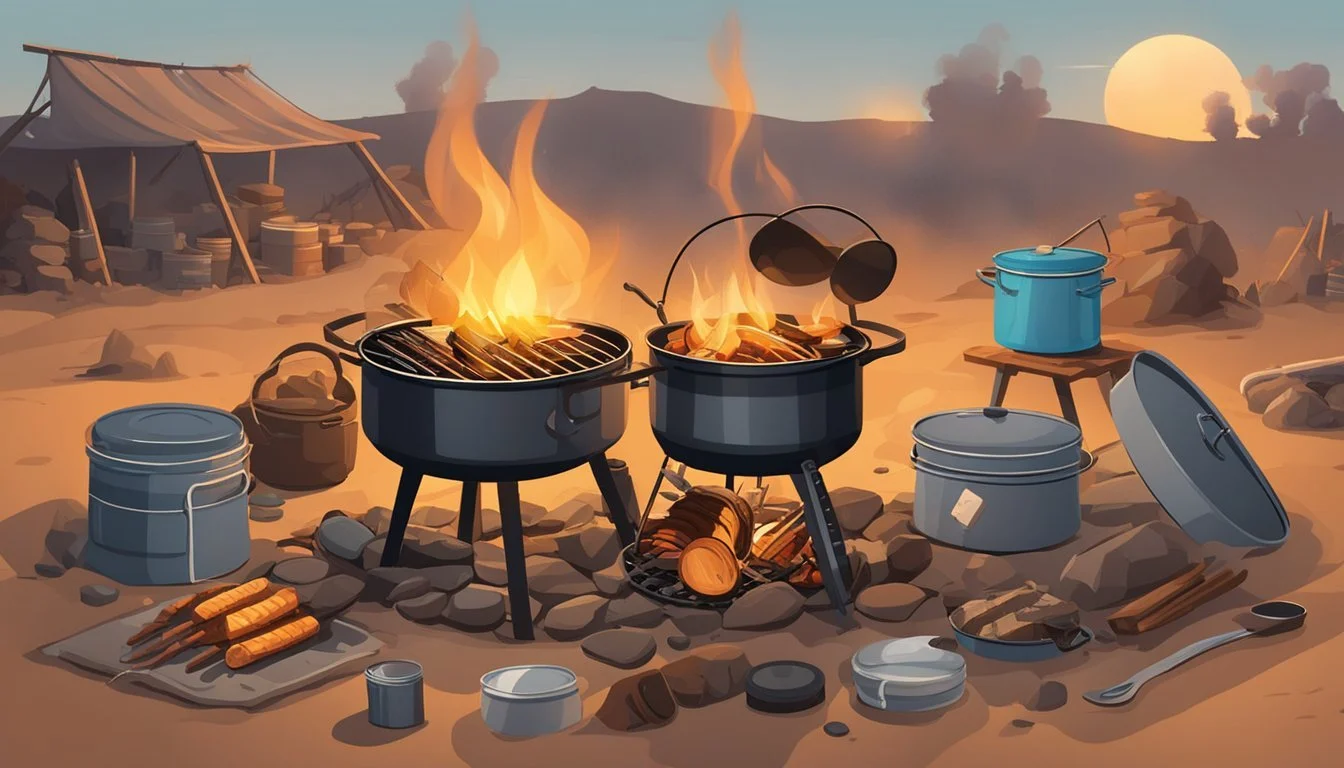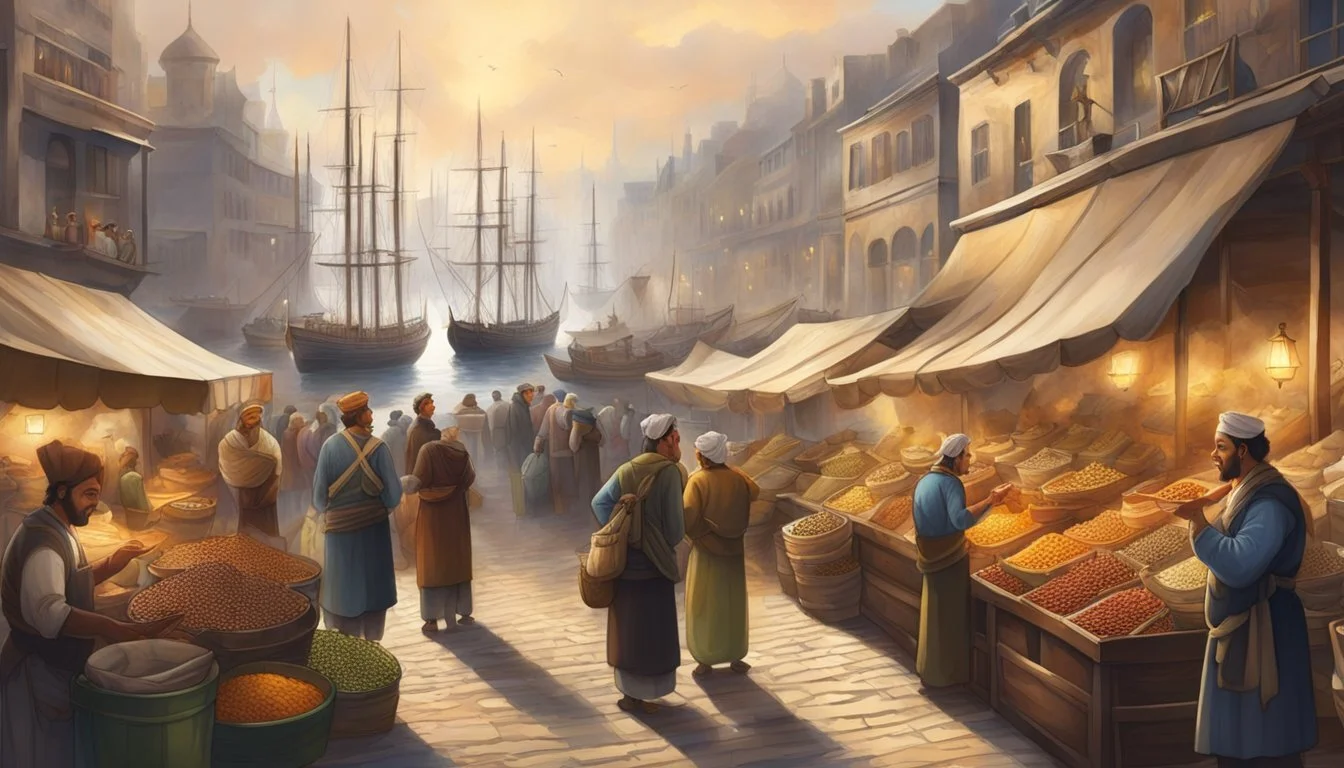Cooking Guide for 7 Days to Die
Survival Through Food Crafting
Cooking plays a vital role in surviving the harsh world of 7 Days to Die. Players must master the art of preparing meals to sustain themselves and fend off hunger. The cooking system allows survivors to combine various ingredients like meat, vegetables, and fluids to create a wide array of recipes at campfires.
Mastering cooking in 7 Days to Die offers significant advantages over relying on scavenged canned foods. By crafting nutritious meals, players can restore their stamina and avoid debilitating effects of hunger and thirst. Cooking also eliminates the risk of contracting dysentery from consuming raw or spoiled food.
The game features dozens of food recipes for players to discover and perfect. As survivors progress, they can experiment with different ingredient combinations to create more complex and beneficial dishes. Efficient cooking becomes essential for long-term survival in the post-apocalyptic world of 7 Days to Die.
Understanding the Basics of Cooking
Cooking is essential for survival in 7 Days to Die. Mastering the basics of cooking equipment, fire-starting techniques, and ingredient sourcing can significantly improve your chances of thriving in the game's challenging environment.
Cooking Equipment
The cooking pot is the primary tool for preparing meals in 7 Days to Die. Players can craft this essential item using forged iron or find it in various containers throughout the game world. A cooking pot allows survivors to boil water, make stews, and create more complex recipes.
Other useful cookware includes:
Grill
Beaker
Glass jar
These items expand cooking options and enable the creation of diverse dishes. Crafting or finding quality cookware early in the game gives players a significant advantage in maintaining their character's nutrition and health.
Starting a Fire
A campfire is crucial for cooking in 7 Days to Die. Players can craft a campfire using:
5 small stones
3 wood
Once placed, the campfire needs fuel to function. Wood is the most common fuel source, but coal burns longer and more efficiently. To light the fire, players simply need to interact with it and select the "Light" option.
Campfires serve multiple purposes:
Boiling water
Providing warmth
Crafting certain items
Proper placement of campfires is important for both cooking and base defense strategies.
Finding Ingredients
Ingredients are scattered throughout the game world. Players can obtain food items through:
Looting buildings and containers
Hunting animals
Farming crops
Foraging for plants
Common ingredients include:
Meat (from animals)
Vegetables (corn, potatoes)
Fruits (blueberries, yucca)
Eggs
Cooking transforms raw ingredients into more nutritious and safer-to-eat meals. This process eliminates the risk of food poisoning from consuming raw meat and increases the overall food value of ingredients.
Developing a diverse ingredient collection allows for the creation of complex recipes, which often provide better sustenance and additional benefits to the player character.
Food Preparation Techniques
Cooking in 7 Days to Die requires careful planning and resource management. Players must balance nutrition, hydration, and survival needs while maximizing the benefits of their limited food supplies.
Meal Recipes and Their Benefits
Grilled meat provides a substantial boost to health and stamina. To prepare it, place raw meat on a campfire or grill. Boiled meat offers similar benefits but requires a cooking pot and water.
Charred meat is the least efficient cooking method but can be made quickly in emergencies. It restores some health but provides minimal stamina.
Vegetable stews combine meat and vegetables for well-rounded meals. They offer excellent nutrition and hydration. Crafting more complex recipes like chili or spaghetti unlocks additional buffs to stamina regeneration and max health.
Hydration Strategies
Clean water is essential for survival. Boil dirty water in a cooking pot to purify it. Bottled water can be found or crafted and provides portable hydration.
Drinks like coffee and tea offer hydration plus temporary stamina boosts. Craft these using water, coffee beans or tea leaves, and a cooking pot.
Fruit juices provide hydration and small food benefits. Make them by combining water and fruits in a cooking pot. Beer restores some hydration but temporarily reduces stamina.
Advanced Cooking
Advanced cooking in 7 Days to Die opens up a world of culinary possibilities. Players can create nutrient-rich meals that provide substantial benefits for survival and exploration.
Utilizing the Cooking Grill
The cooking grill is a game-changer for advanced chefs. It allows for more efficient cooking and expands recipe options. Players can grill meat, vegetables, and even create complex dishes like fish tacos or steak and potato meals.
Grilled meats offer higher satiety levels compared to raw or basic cooked versions. The grill also reduces cooking times, making it ideal for preparing large batches of food.
To maximize grill efficiency, players should:
Prepare ingredients beforehand
Cook multiple items simultaneously
Use wood or coal as fuel for longer-lasting fires
Cooking with a Beaker
Beakers unlock a new realm of culinary experimentation. They're essential for crafting advanced recipes and beverages.
With a beaker, players can create:
Grain alcohol
Vegetable stew
Meat stew
Hobo stew
These advanced recipes often provide superior nutritional benefits and can even boost player stats temporarily.
Beakers are also crucial for purifying water, an essential resource for long-term survival. Players should prioritize finding or crafting a beaker early in their game.
Mastering Complex Recipes
Complex recipes yield the most substantial benefits in 7 Days to Die. Dishes like blueberry pie, bacon and eggs, and spaghetti not only satisfy hunger but also provide unique buffs.
Key complex recipes include:
Vegetable Stew: Boosts health regeneration
Meat Stew: Increases stamina
Chili Dog: Provides warmth in cold biomes
Sham Chowder: Enhances disease resistance
To master these recipes, players need to:
Gather diverse ingredients
Upgrade cooking skills
Experiment with different combinations
The "Master Chef" perk is invaluable for unlocking the full potential of advanced cooking. It allows for crafting top-tier recipes like gumbo stew and pumpkin pie, which offer powerful, long-lasting effects.
Nutrition and Wellness
Proper nutrition in 7 Days to Die is crucial for survival and optimal performance. A well-balanced diet impacts health, stamina, and overall wellness in the game.
Balancing the Food Groups
In 7 Days to Die, players must consume a variety of edible items to maintain their health and stamina. Fruits and vegetables provide essential vitamins and minerals. Meat sources offer protein and fat for energy.
Grains and cereals supply carbohydrates for sustained stamina. Dairy products, when available, contribute to bone health and provide additional protein.
Balancing these food groups helps players avoid nutritional deficiencies and maintain peak performance. Eating a diverse range of foods also prevents boredom and maximizes the benefits of each item consumed.
Effects of Food on Health and Stamina
Nutritious food in 7 Days to Die directly impacts a player's health and stamina. Consuming food increases fullness, which in turn restores maximum stamina.
Different foods provide varying levels of benefits:
High-quality meals boost health regeneration
Protein-rich foods enhance stamina recovery
Fruits and vegetables offer hydration benefits
Players must monitor their nutrition levels carefully. Hunger and thirst can lead to debilitating effects, slowing movement and action speed. In extreme cases, malnutrition can result in death.
Certain foods provide temporary buffs to specific attributes. These effects can be strategically used to overcome challenges or improve survival chances in dangerous situations.
Resource Gathering and Hunting
Obtaining food is crucial for survival in 7 Days to Die. Players must utilize various methods to gather resources and sustain themselves in the post-apocalyptic world.
Hunting Wildlife for Meat
Hunting provides a reliable source of protein. Players can track and kill animals such as deer, bears, and wolves using bows, guns, or melee weapons. After a successful hunt, raw meat can be harvested from animal carcasses.
Stealth is key when approaching wildlife. Crouch and move slowly to avoid startling prey. Aim for vital organs to ensure a quick kill.
Hunting yields not only meat but also other valuable resources:
Animal fat
Leather
Bones
These items are useful for crafting and cooking recipes. Properly cooked meat offers superior nutrition compared to raw meat, which can cause food poisoning.
Foraging and Farming for Plant-Based Foods
Plant-based foods offer essential nutrients and can be obtained through foraging or farming. Wild plants are scattered throughout the environment and can be gathered by hand.
Common forageable items include:
Blueberries
Yucca fruit
Pumpkins
Farming allows for a more consistent food supply. Players can cultivate crops like corn, potatoes, and vegetables. This requires:
Tilling soil
Planting seeds
Watering crops
Farming takes time but provides a renewable food source. It's particularly useful for long-term survival strategies.
Scavenging for Canned and Packaged Foods
Scavenging is a vital skill for finding preserved foods. Players can search abandoned buildings, houses, and stores for canned goods and packaged foods. These items offer immediate sustenance without the need for preparation.
Loot containers such as:
Refrigerators
Cupboards
Trash cans
Abandoned cars
Be cautious when looting in urban areas, as zombies may be present. Canned foods have long shelf lives and provide a quick energy boost. Some packaged foods may require cooking to maximize their nutritional value.
Scavenging also yields other useful items like cooking utensils and recipes. These can enhance food preparation capabilities and expand the player's culinary options.
Survival Strategies
Effective survival in 7 Days to Die hinges on creating a secure base and developing robust zombie defense tactics. These strategies are essential for long-term success in the game's harsh post-apocalyptic world.
Building and Maintaining a Base
A well-constructed base serves as a sanctuary from zombie hordes. Start by selecting a defensible location with good visibility and access to resources. Use sturdy materials like concrete or steel for walls and reinforced doors.
Create multiple entry points for escape routes. Install traps and obstacles around the perimeter to slow down attackers. Spike traps and barbed wire are effective early-game options.
Set up storage systems for efficient resource management. Organize loot in labeled containers. Craft workbenches, forges, and campfires to support crafting and cooking activities.
Maintain your base regularly. Repair damage after zombie attacks. Upgrade defenses as you acquire better materials and skills. Consider building a rooftop garden for sustainable food production.
Defending Against Zombies
Zombie defense requires a combination of tactical planning and combat skills. Establish a clear field of fire around your base by removing obstacles and leveling terrain. This improves visibility and targeting.
Craft ranged weapons like bows or firearms for attacking zombies from a distance. Melee weapons are useful for close-quarters combat. Keep a variety of weapons on hand to adapt to different situations.
Use elevated positions to your advantage. Build sniper towers or walkways for better vantage points. Place spotlights to illuminate the surrounding area at night.
Set up noise-making devices to lure zombies away from your base. Strategically placed explosives can thin out large groups of attackers. Always have an escape plan in case your defenses are overwhelmed.
Crafting and Upgrading
Crafting and upgrading are essential skills in 7 Days to Die. Players must master these to create better tools, weapons, and fortifications for survival.
Tools and Weapons Improvements
Crafting tools and weapons starts with basic materials like wood and stone. As players progress, they unlock more advanced recipes through perks and skill magazines. Iron tools offer significant upgrades in durability and effectiveness.
The forge becomes crucial for creating higher-tier items. It allows the smelting of raw materials into usable components. Players can craft iron arrowheads, tool parts, and weapon components using the forge.
Advanced engineering skills open up possibilities for crafting complex items. These include automated turrets, electric fences, and specialized ammunition. Upgrading existing tools and weapons often requires specific perks and resources.
Building a Robust Crafting Station
A well-designed crafting station boosts efficiency and productivity. Players should start by creating a secure area with storage containers for materials. Placing workbenches, forges, and chemistry stations in close proximity saves time.
Organization is key. Sorting materials into labeled storage chests helps streamline the crafting process. Installing lights around the crafting area improves visibility and work speed.
As players advance, they can expand their crafting station. Adding multiple forges allows for parallel smelting operations. Upgrading workbenches with better tools increases crafting speed and quality.
Resource Management
Effective resource management is crucial for survival in 7 Days to Die. Players must carefully balance their fuel, ingredients, and prepared foods to thrive in the post-apocalyptic world.
Managing Fuel and Cooking Times
Wood serves as the primary fuel source for campfires. Players should stockpile wood from trees and fallen logs. Coal offers a more efficient alternative, burning longer and hotter. Cooking times vary depending on the recipe and fuel type used.
Grilled meat cooks faster than stews or complex dishes. Players can optimize fuel usage by cooking multiple items simultaneously. Monitoring the cooking process prevents food from burning and wasting resources.
Campfires can be strategically placed near hunting grounds or base camps to minimize travel time. This reduces the risk of encountering zombies while transporting raw ingredients.
Inventory Tactics for Ingredients and Prepared Foods
Efficient inventory management is essential for maximizing cooking potential. Players should prioritize high-nutrient ingredients like meat, vegetables, and fruits.
Canned goods serve as backup options but offer less nutritional value than freshly cooked meals. Prepared foods occupy less inventory space than raw ingredients, making them ideal for long expeditions.
Players can create a dedicated storage area for cooking supplies near their campfire. This setup streamlines the cooking process and reduces time spent searching for ingredients.
Rotating food stocks prevents spoilage. Consuming perishables first and saving preserved items for emergencies ensures a steady food supply. Balancing a variety of dishes provides diverse nutritional benefits and prevents food fatigue.
Navigation and Trade
Locating traders and kitchens is essential for survival in 7 Days to Die. Players can barter for food, drinks, and ingredients to sustain themselves and craft recipes.
Finding Traders and Kitchens
Traders are scattered throughout the game world. Look for their fortified compounds, usually marked on the map. Some traders specialize in selling tools or armor, while others offer a variety of goods.
Kitchens can be found in various buildings like houses, restaurants, and hotels. They often contain valuable cooking equipment and ingredients.
Use the compass and map to navigate between landmarks and locate these important sites. Marking discovered trader locations on your map helps for future visits.
Bartering for Food, Drinks, and Ingredients
Traders offer a wide selection of food, drinks, and cooking ingredients. Players can exchange items or currency for these goods.
Some common tradeable items include:
Canned foods
Fresh produce
Meat
Cooking utensils
Recipes
Prices may vary between traders. It's wise to compare offers and save valuable resources for essential items.
Bartering skills improve over time, leading to better deals. Regular visits to traders can unlock special inventory items and quests for additional rewards.
Health and Ailments
Surviving in 7 Days to Die requires careful management of health and ailments. Players must be vigilant about infections, diseases, and injuries while utilizing effective preventive measures and cures.
Dealing with Infections and Diseases
Infections pose a significant threat in the game. When infection levels reach 5%, players can use honey to cure it. Harvesting tree stumps yields honey, and two portions can treat up to 10% infection. For more severe cases, antibiotics become essential.
Dysentery is another common ailment. Consuming contaminated water or raw meat increases the risk. To combat dysentery, players should boil water and cook food thoroughly. Herbal antibiotics offer a natural remedy for milder cases.
Injuries from falls or zombie attacks require immediate attention. Bandages and first aid kits help restore health quickly. For long-term healing, players should rest in a secure location.
Preventive Measures and Cures
Prevention is key to maintaining wellness in 7 Days to Die. Cooking food eliminates the risk of food poisoning and provides better nutritional benefits. Blueberry pie and chili dogs are excellent food choices, offering substantial health and stamina boosts.
Players should always carry a supply of clean water and purification tablets. Staying hydrated is crucial for overall health and stamina regeneration. Crafting herbal remedies from local plants provides a sustainable source of healing items.
Regular consumption of vitamins and minerals found in diverse foods helps boost the immune system. Glue can be used to craft splints for treating broken bones. Maintaining a well-stocked medical kit with antibiotics, bandages, and pain relievers ensures readiness for unexpected health crises.
Beverage Crafting
Crafting beverages in 7 Days to Die offers players essential hydration and unique benefits. From basic fluids to energy-boosting concoctions, mastering drink creation is crucial for survival.
Refreshing Drinks and Their Benefits
Murky water serves as a basic hydration source, but players can craft superior options. Yucca juice provides 20 hydration points and reduces dysentery chance. Snowberry juice offers 15 hydration and grants cold resistance. Red tea boosts stamina regeneration by 25% for 300 seconds.
Goldenrod tea cures dysentery and provides 20 hydration points. Yucca juice smoothie, a more advanced recipe, offers 30 hydration and increases max stamina by 10 for 600 seconds. These drinks not only quench thirst but provide valuable survival bonuses.
High-Energy Beverages for Survival
Coffee stands out as a vital energy drink, granting 10 hydration and doubling stamina regeneration for 180 seconds. Blackstrap coffee, an upgraded version, provides 20 hydration and triples stamina regeneration for 300 seconds.
For extreme situations, grain alcohol offers unique benefits. It reduces feeling cold by 20 degrees for 600 seconds but decreases stamina by 20%. Players must balance its advantages with potential drawbacks.
Crafting these high-energy beverages requires specific ingredients and skills. Mastering their production ensures players maintain peak performance in challenging survival scenarios.





